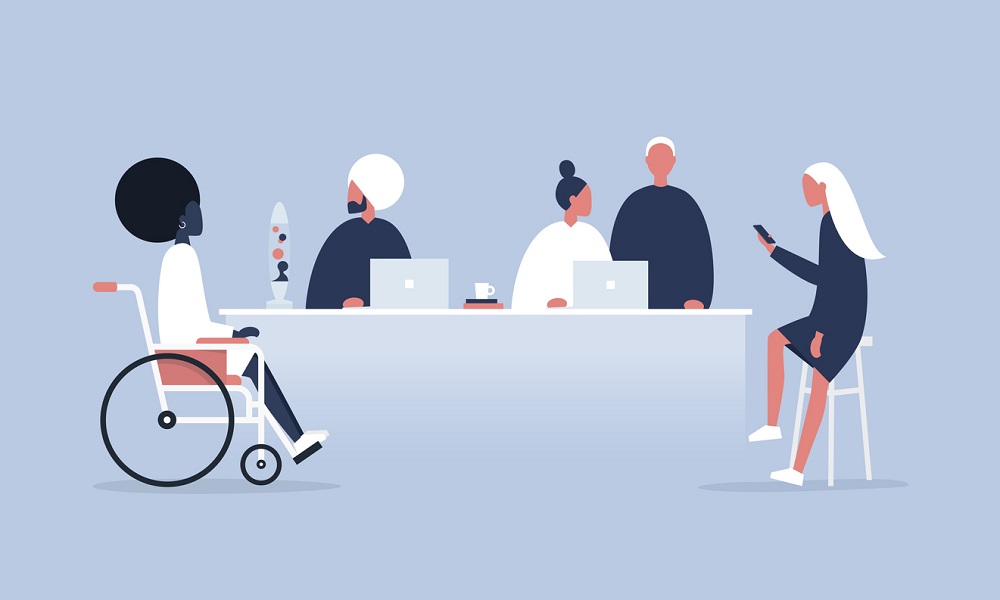Aoibhinn Mc Bride pinpoints three trends every workplace should be employing in the new year.
The Christmas period is usually the busiest for those working across the beauty sector, both in salons and in retail—card reader company Zettle found that 22nd December saw the highest amount of transactional traffic.
But working to max capacity can often leave workers feeling completely burnt out by the time New Year’s Eve rolls around, and a lot of the time it all depends on how well employers support their staff over this hectic period. If they feel supported, staff won’t want to leave. But if they don’t? Expect mass resignations and a staffing headache that can take months to resolve.
The good news? By knowing some of the biggest drivers that are motivating employees to move on, employers can work to improve their working conditions and long term career prospects to keep employees motivated and invested into 2023 and beyond.
Benefits matter
When it comes to attracting new hires, money talks. According to research conducted by Indeed and Glassdoor using a database of millions of employee reviews and salaries globally, higher pay still tops the polls as the main reason why people move jobs.
That being said, benefits are also a huge driver for new and existing employees. Myer, Australia’s first major retailer, has consistently pioneered employee benefits since its inception. It now boasts lifestyle leave so team members can embrace a new way of working to help work-life balance, volunteer leave, and in 2009 was the first Australian retailer to provide paid parental leave for permanent staff members.
Continuous learning is also a great way to keep existing staff engaged and incentivised, while it can also be used as a selling point when trying to lure new recruits on board. Australian Skin Clinics has implemented this thinking into its learning and development initiatives that encourage staff to train as paramedical skin ambassadors through formal training. It also has a dedicated training team which focuses on supporting new hires, while also providing continuous education to those who have been with the company for a longer period of time.
More flexibility
When it comes to adopting a more flexible approach to working, Australia is leading the way internationally. That’s according to the Reinventing Work Report published by Adaptavist, which saw 3,400 people across Australia, the US, UK and Canada detail how they feel about the new world of work post-pandemic.
The report identified that 50% of Australian workplaces offer hybrid working options compared to just 44% of their international counterparts. It also found that Australia has the highest percentage of hybrid workers (34%), while the combined average of the U.S., UK and Canada comes in at just 29%.
THE ICONIC offers flexible working to all employees through a mix of hybrid and remote working models. It also has formulated a way to give parents the flexibility they need—an extra day off for your kids’ first day of school every year, while pup parents are permitted to bring their dog to work any day of the week. Laser Clinics Australia is another great example of a company that offers flexible working arrangements for staff where possible—those in non client-facing roles can opt for a hybrid working model.
Force for good
While salary and benefits are still the main motivational drivers for staff, increasingly, workers want to be part of an organisation that is diverse, inclusive of all types of people and is actively working towards being more sustainable through its ESG (environmental, social and governance) policies.
Additionally, among Millennial and Gen Z cohorts, being aligned to a company that is an authentic force for good is increasingly important. According to a recent survey conducted by Gallup, 42% of U.S. workers want to work for an organisation that is diverse and inclusive of all types of people.
And with Millennials expected to make up 75% of the workforce by 2025, and Gen Z contributing to 30% of the workforce by 2030, employers will need to demonstrate their credentials to not only attract top talent, but retain them.
Sephora is a great example of a company already taking action when it comes to D&I. In June 2020, it carried eight Black-owned brands but in 2021 launched the Sephora Accelerate brand incubator programme to foster and launch BIPOC owned brands. Aesop is another company committed to D&I and has a team of in-house D&I advisors tasked with executing internal strategy based on external insights. And over at MECCA, the leadership team embarked on an ambitious initiative, M-POWER, in 2017 to help educate and empower women and girls.
This article was produced in partnership with Jobbio.
Read the current issue of our digital magazine here:
- For more news and updates, subscribe to our weekly newsletter
- Follow us on Instagram
- Like us on Facebook
- Join Australia’s largest network of beauty industry professionals on LinkedIn
- Subscribe to our print magazine
Have an idea for a story or want to see a topic covered on our site and in our pages? Get in touch at info@professionalbeauty.com.au.

